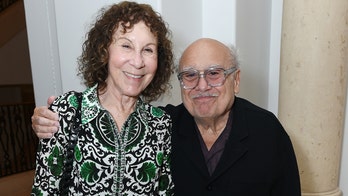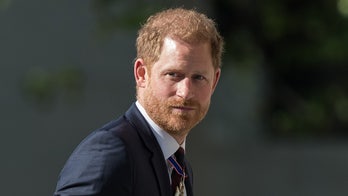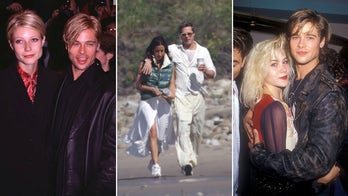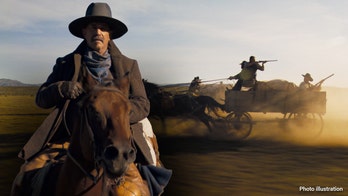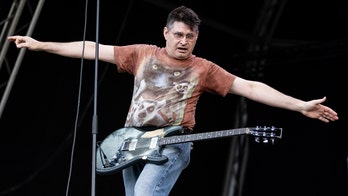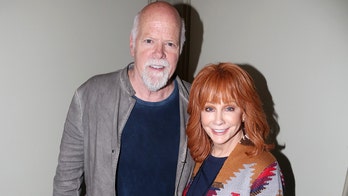Winning the Emmy last year forOutstanding Unstructured Reality Program,Born This Wayrepresents the very best of what’s possible in reality television today. From Jonathan Murray ofBunim/Murray Productionsa reality TV pioneer who started out with 1992’s landmark seriesThe Real WorldBorn This Way examines the lives of young adults born with Down syndrome, and their fight to live their lives on their own terms.
LikeThe Real World,Murray’s latest reality series examines a group of diverse individuals leading the unexamined life, providing a platform for their voices to be heard, their passions explored. The series combats stigma and any notions one might have of individuals with Down syndrome, demonstrating that in today’s world, individuals with disabilities of this nature can go on to live fully realized, independent lives, with jobs, independent living spaces and committed long-term relationshipsjust like anyone else.
What was the genesis of Born This Way, and what were your intentions as you set out to make the series?
It was a long journey. Seven years ago, we took our first step at doing something with people with Down syndrome. We did a pilot for A&E, and it didn’t get picked up. There was a lot of love for the show, but whether we didn’t quite get it right, or it wasn’t the right time, whatever.
At the time, Duck Dynasty was still supreme. Duck Dynasty started to wind up its course, and I think the network realized they were never going to find the new Duck Dynasty, so they said, “Who are we?” They came to the conclusion that their brand was innovative.
Obviously, they had Intervention, and they’ve done some really interesting television. They went back and looked at all the shows they had piloted, and the one show that they all still felt there was something there was this project involving people with Down syndrome. They said to us, “How would you do it today?”
That first step we took, it was very Real World-like, in that we put them all in a house together. Wed continued to stay involved with the local disability community, and what we realized was that there was a much more interesting story, and that that story could be better told with more of a documentary approach.
This is really the first generation of young adults with Down syndrome who have been raised to be independent. Through their elementary and high school years, many of them are getting the skills, the early interventionthe things they need to become independent.
We realized by casting a group of young people, most of whom were in the Orange County/LA area and already knew each other through arts and other service programs, that we could tell that story, and it would give our viewers two windows in: the story of these young adultsthe ability within the disabilityand the story of their parents, and this realization that they’re not going to be around forever, so as hard as it is for them, they need to take the steps to help their young people become fully independent, to step back and let them get their own place, let them get a job, all those things they may have been nervous about. There’s a wonderful dramatic tension.
It seems that youve long had an interest in people within the disability communityAutism: The Musical was one of your first film acquisitions, back in 2007. What is your interest in telling these peoples stories?
Well, it’s broader than that. Going back to the beginning of The Real World, the idea was to reflect on seven very diverse people. There were people who really weren’t being seen on television at that time in ’92mainly LBGTQ peopleso The Real World really pioneered.
We’ve always had an interest in people whose voices weren’t being heard, and how we could amplify those voices for them. Starting with the first attempt at something with people with Down syndrome, I became a true believer that we, as a society, have to figure out how we can make it possible for all our citizens to be fully included in our community, whether it’s the community that involves arts and friendship, or the community we get from work.
Everybody wants to be a full participant, and a lot is being done in that. Quite honestly, the disability movement is sort of the new civil rights movement. Any of us could become disabled at some point in our lives, so there’s a lot of people who relate to this.
Through the years, it seems that much of reality television has dedicated itself to bringing out the worst in people. How does it feel to work on series like Born This Way, which function so differently?
It feels really good. Born This Way was the show that got me back to some of the feelings I was having when we were first starting out with The Real Worldthis idea that a show can reflect the best in people, and by reflecting those voices, you can make positive change. When President Clinton gave his wonderful words about Pedro Zamora and the impact of Pedro being on The Real World, that was one of the proudest moments I had had up until Born This Way.
It’s great, and I think in some ways, we’re at a moment where there’s been this moveat least in realityto try and find more authenticity in the stories we’re telling. As a producer, I’ve always preferred to be more fly-on-the-wall, but that means you have to have the time.
We shoot Born This Way over 17, 18 weeks, which is far longer than most of these reality shows. A lot of times, reality shows will be shooting an hour of television in three or four days. That means that often, the producers have to get their hands in there to make sure they’re getting what they need. With Born This Way, we chose to have a much smaller crew so that we could spread those dollars out over more time, which allows us to capture much more of the authenticitythe real reality of what these people are going through.
What has been the process of working with your Born This Way stars and their families to provide a productive outlet?
When you enter a community like this, you have to educate yourself. Laura Korkoian, the showrunner, and I have spent a lot of time educating ourselves. I’m now on the board of RespectAbility, which is a national disability organization, so everyday, I’m looking at the issues around disability and employment, and all these things.
At the beginning, we sat down with each family and talked about their short- and long-term goals for their young adult with Down syndrome, to try and get a sense of, Well, what is the arc of this series going to be? What is the arc of a season going to be?
Certain people like Elena [Ashmore] had not really had jobs. A real goal of Elena and her mom was to move towards getting her employed, so she got involved with this program where she’s learning to be a barista. A goal for Steven [Clark] and Sean [Couevas] was to eventually live on their own. They both had been applying for a HUD voucher that would allow them to do that. We took a test run, having the two of them share a place last season.
It’s talking with the families, getting a sense of what the goals are, and then seeing how we can capture that. Sometimes, it’s introducing the families to different support organizations and then letting them take the steps, but making them aware that there is support.
Some of it just happens. In Season 2, thats nominated this year, Megan [Bomgaars] had some unresolved issues with her dad. Her parents are divorced, and she hadn’t really ever had an opportunity to talk to him about feeling abandoned by him. We had an amazing scene where she sat down with her dad and talked to him about those issues. She was able to see how much he loved herthat he could be there for her, but maybe not in the way she wished.
That’s what I love about Born This Way. There are so many stories that end up being so relatable to anybody who watches the show because many people come from homes with parents who are divorced. Another great moment was after Sean and Steven did their three months of living together, when Sean went to thank the person who would check in on them, and help them with budgeting, and support them.
It was so beautiful, what he said to the guy. It brought tears to all of our eyes that Sean was so perceptive and so insightful about the impact that this person had on him by helping him do thishelping him accomplish living alone.
Megan was trying to decide whether she should stay with her boyfriend, because she was spending more and more time in LA. Steven clearly had an attraction to herhe didn’t want to be a jerk, but you knew he was longing for her. Then ultimately, when Megan breaks up with her boyfriend, Steven is like, “Oh my God.”
As producers, it’s so exciting to have such honest participants, whether it’s the parents or the young adults with Down syndrome, to get such honesty every day from them.
How hands-on are you able to be with this show?
I’ve started to pull back. I sold Bunim-Murray five years agoGil [Goldschein] runs it, and Jeff [Jenkins] and Julie [Pizzi] run creative, so I’ve been purposely pulling back and focusing on less shows.
This show is a real passion project, and I stay very involved with the families and the young people. I was up in Sacramento at the National Down Syndrome Congress doing the keynote speech there, and spending time with our families. I’ve stayed very involved, but I’m not always in the room.
Laura Korkoian is always there, and Kasey Barrett, the co-EP. Im obviously very involved with the way we tell our stories, and the edit of them. I look forward to getting each cut of this show. It’s really exciting when it comes through, and it’s been challenging in a good way because with a show like this, you can’t fall into the usual reality clichs of editing.
You can’t create false drama going into the commercial break; you can’t throw in a lot of music cues that would tell viewers how to feel. Again, were taking a much more documentary approach in the way we tell the story.
We found we don’t need someone throwing tables like you get on Housewives. I think people are so attached to these characters and so onboard for their emotional journey that the moments don’t have to be as big. The moments are still huge accomplishments, even though they might not be big by typical standards.
What other challenges do you face in making the show?
We’re cognizant that our cast, these young people with Down syndrome, sometimes do not have the stamina to go for long periods at a time. We have to be very aware of that. Because we have this longer shooting schedule, our shooting periods with them each day are much shorter. Sometimes, because we have seven cast members, we’re not shooting with everybody every day. The schedule’s a little more relaxed and not quite as intense.
What are your thoughts on how reality television has evolved since you entered the forum?
I’m really excited about the possibilities for reality television right now. Bunim-Murray is doing Bill Nye Saves the World on Netflix. We have another project that’s going to be on Facebook. There are so many opportunities now for producers to get their projects on the air.
Born This Way is great for the A&E brand, and it has a really loyal, solid following.
A show like that can be a success today, whereas maybe seven to 10 years ago, when you had to have 2 million viewers to be a success, the show wouldn’t have stayed on the air.
'LA 92' Directors Daniel Lindsay & T.J. Martin On Recreating Emotional Experience Of The LA Riots
'The Keepers' Director Ryan White On A Baltimore Community's Fight Against Institutional Injustice
